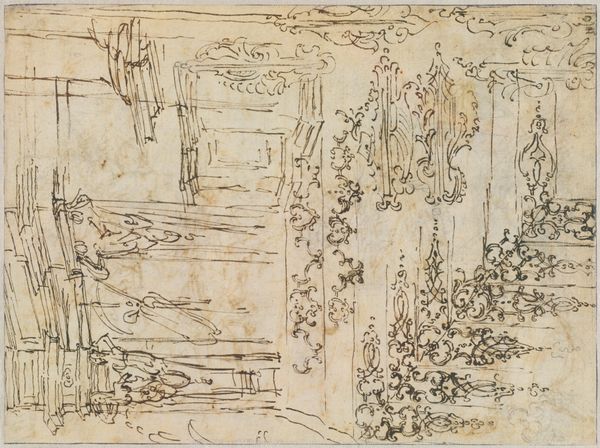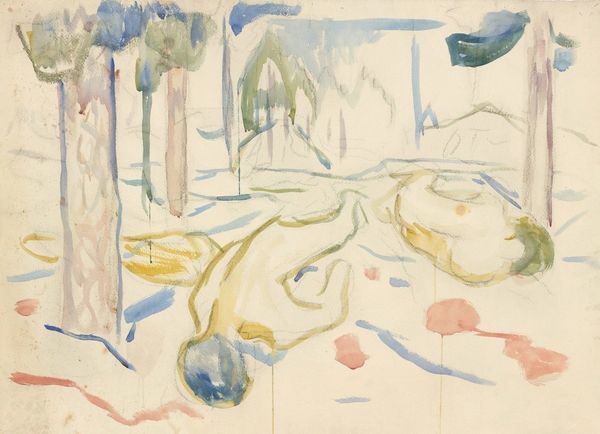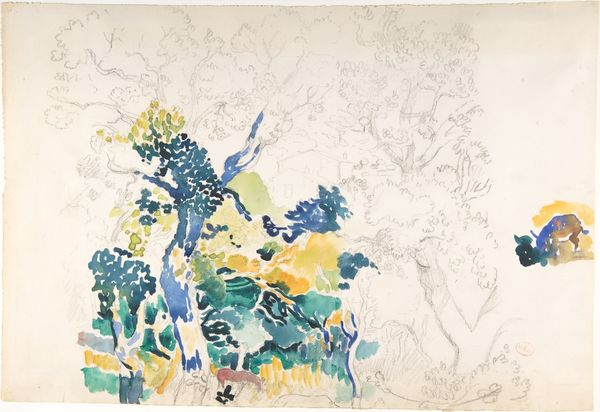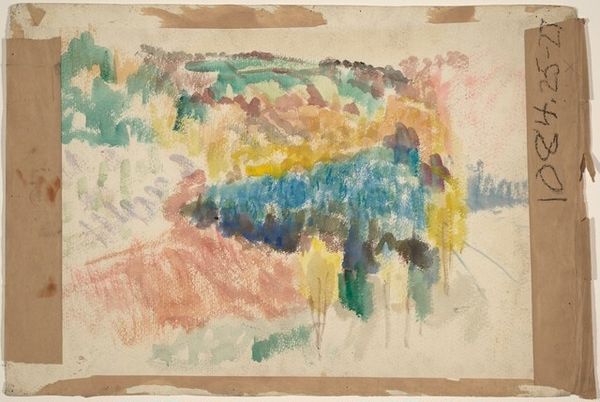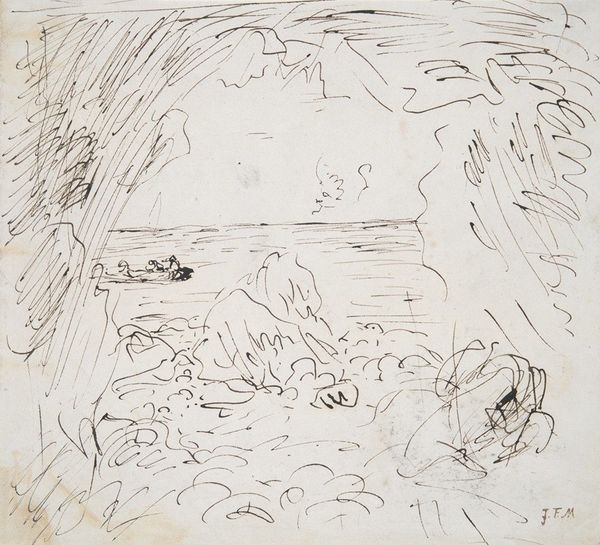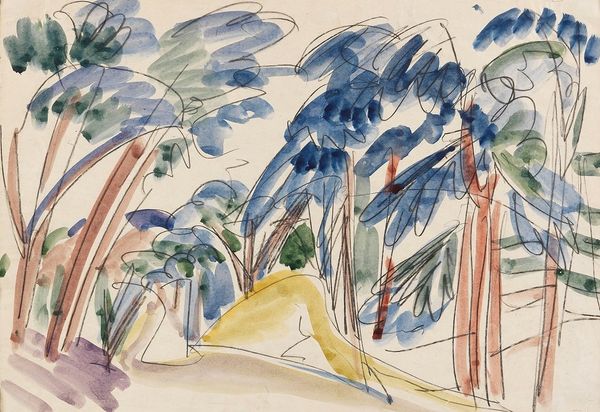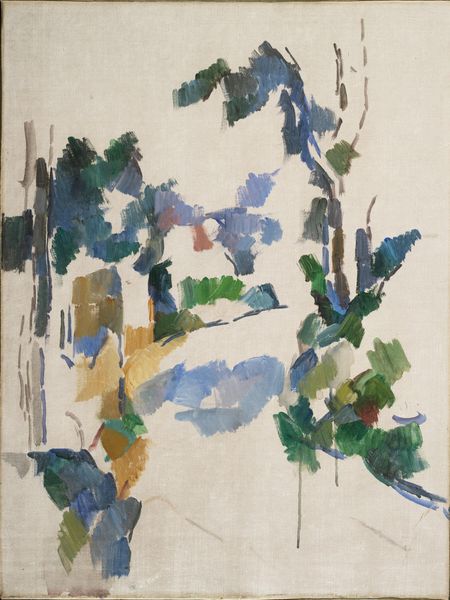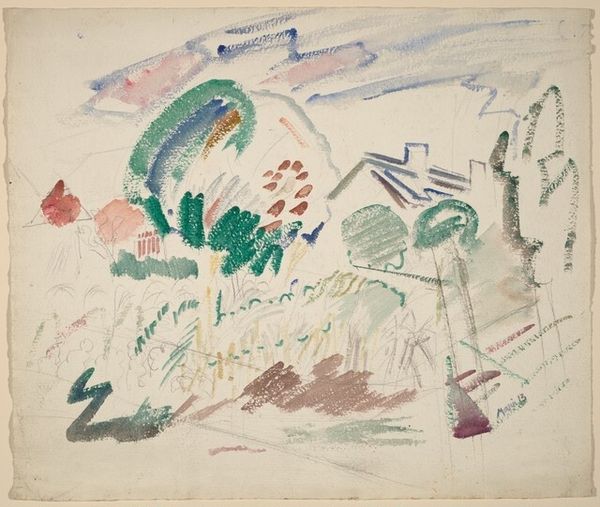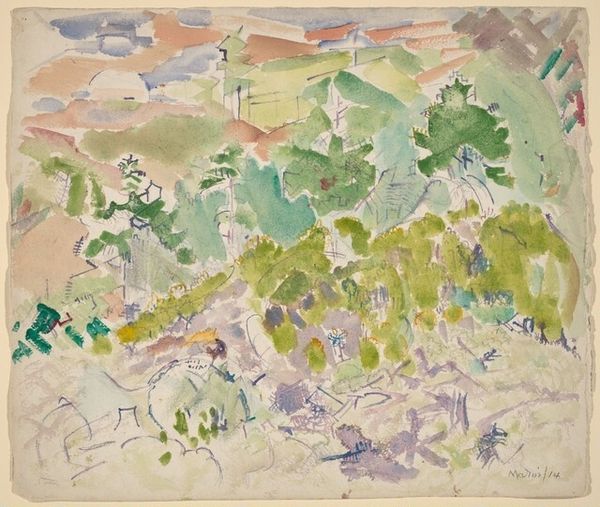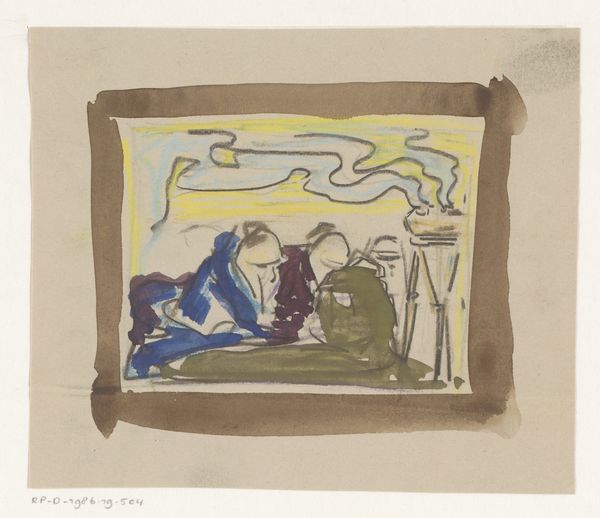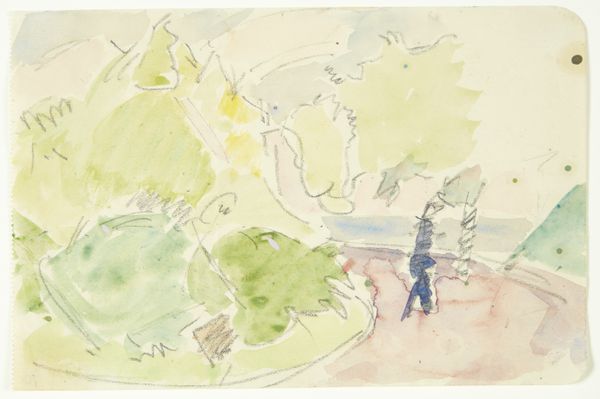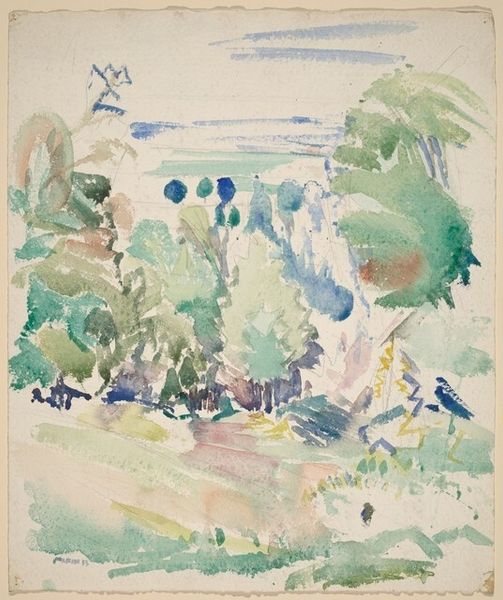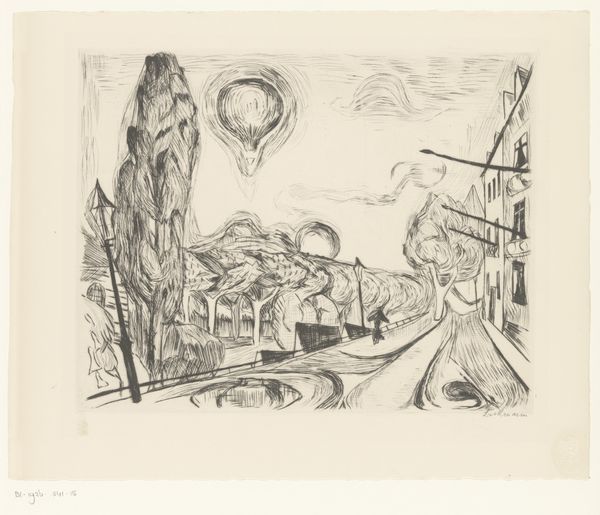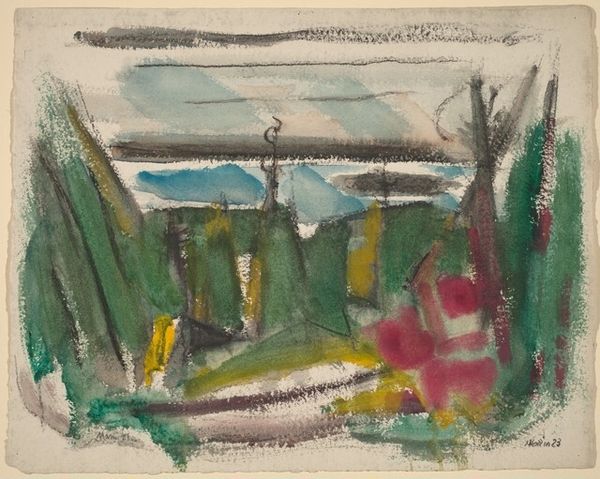
drawing, paper, watercolor, ink
#
drawing
#
landscape
#
figuration
#
paper
#
watercolor
#
ink
#
sketch
#
expressionism
#
monochrome
Copyright: Public Domain
Ernst Ludwig Kirchner made this watercolor drawing, "Life (Gujer Design)," and it feels like a quick, almost frantic, sketch of a much larger idea. The colors are light, washed out, but the black lines are so insistent, carving out shapes and figures. Look at how he uses the black to create depth and shadow, especially in the mountain range in the background. It's like he's trying to capture a fleeting moment, a scene overflowing with life. There’s something unfinished about this work, a sense of searching. That’s what makes it so compelling. Kirchner is really grappling with how to represent the world around him, how to make sense of the chaos and beauty of life. It reminds me a little of Emil Nolde’s raw expressionism, that same urge to capture something real, something felt, on paper. Ultimately, art is a conversation and Kirchner invites us to join in.
Comments
stadelmuseum about 2 years ago
⋮
In the 1920s, Kirchner’s works began to exhibit an increasingly ornamental organization of the surface. This “carpet style” had emerged in part from his productive collaboration with the weaver Lise Gujer (1893–1967), whose acquaintance he had made in Davos in 1921. Gujer wove more than thirty textile works after designs by Kirchner, among them the carpet "Life" (Städel Museum, Inv. Nr. 2111) commissioned by Carl Hagemann (1867–1940). The artist made several preparatory drawings for the scene. The earliest version, the Gujer Design, already features the depictions of the cattle drive and the path of life that would dominate the final composition (Städel Museum, Inv. No. 17768).
Join the conversation
Join millions of artists and users on Artera today and experience the ultimate creative platform.
